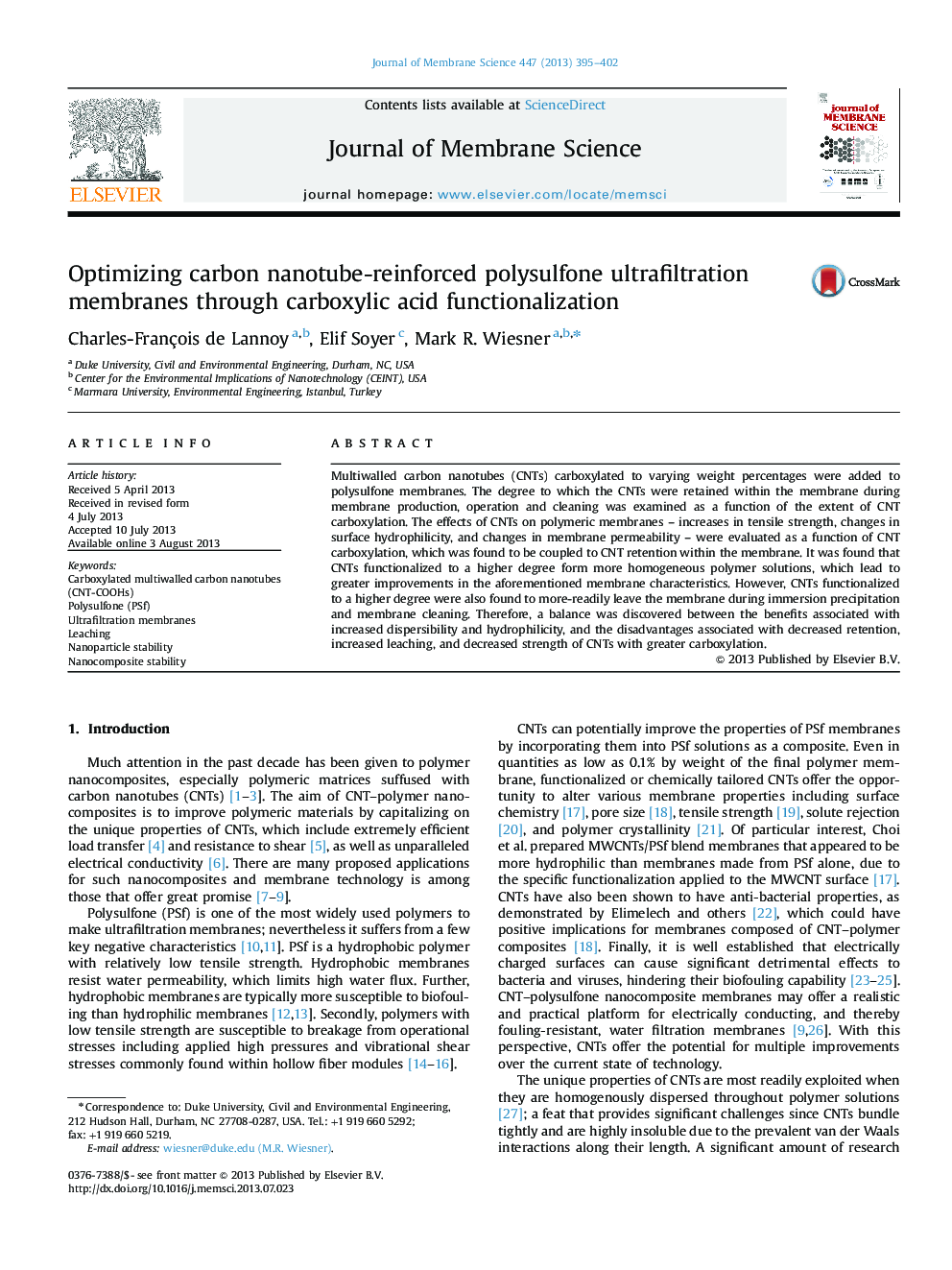| Article ID | Journal | Published Year | Pages | File Type |
|---|---|---|---|---|
| 634247 | Journal of Membrane Science | 2013 | 8 Pages |
•CNT-COOHs formed homogeneous polymer solutions which improved Young's Modulus.•CNT-COOHs formed more hydrophilic membrane surfaces.•Increased CNT carboxylation caused decreased stability within polymer membranes.•CNT-COOHs leached from membranes during membrane gelation and membrane cleaning.•Optimal carboxylation degree was found for greatest membrane property improvements.
Multiwalled carbon nanotubes (CNTs) carboxylated to varying weight percentages were added to polysulfone membranes. The degree to which the CNTs were retained within the membrane during membrane production, operation and cleaning was examined as a function of the extent of CNT carboxylation. The effects of CNTs on polymeric membranes – increases in tensile strength, changes in surface hydrophilicity, and changes in membrane permeability – were evaluated as a function of CNT carboxylation, which was found to be coupled to CNT retention within the membrane. It was found that CNTs functionalized to a higher degree form more homogeneous polymer solutions, which lead to greater improvements in the aforementioned membrane characteristics. However, CNTs functionalized to a higher degree were also found to more-readily leave the membrane during immersion precipitation and membrane cleaning. Therefore, a balance was discovered between the benefits associated with increased dispersibility and hydrophilicity, and the disadvantages associated with decreased retention, increased leaching, and decreased strength of CNTs with greater carboxylation.
